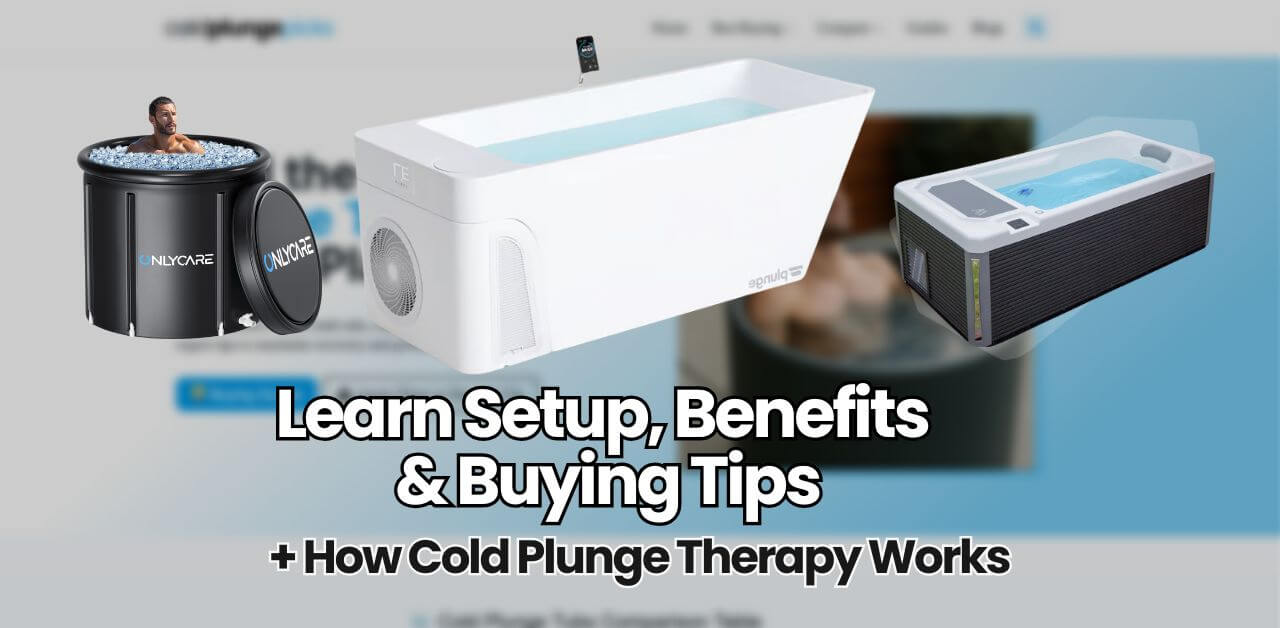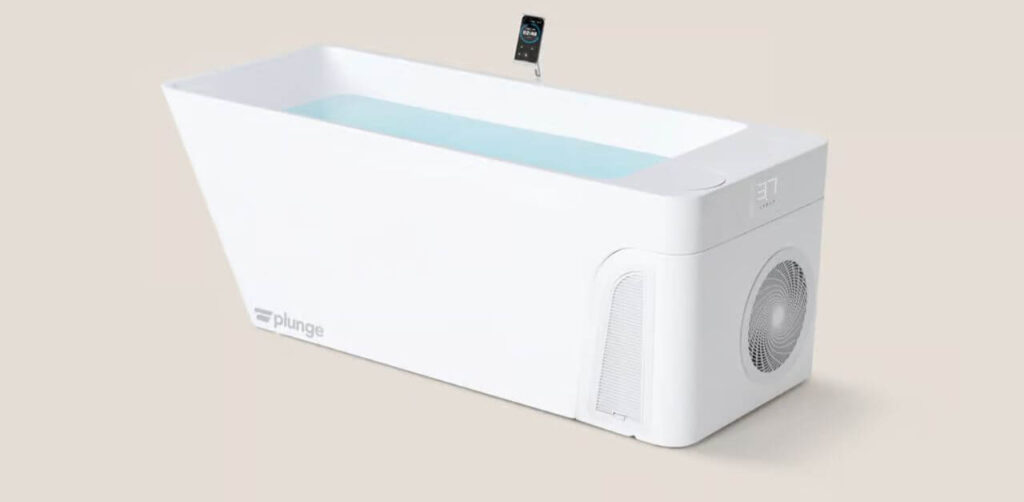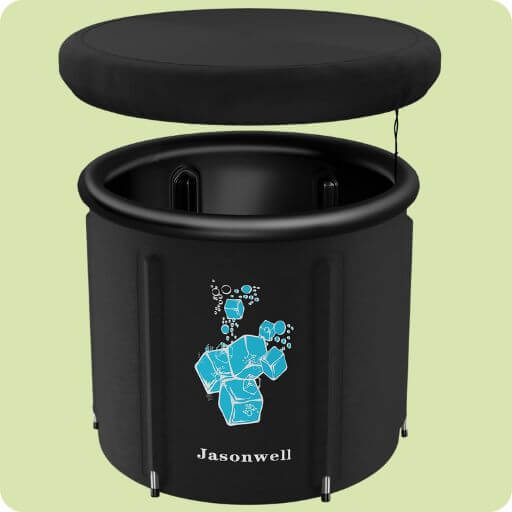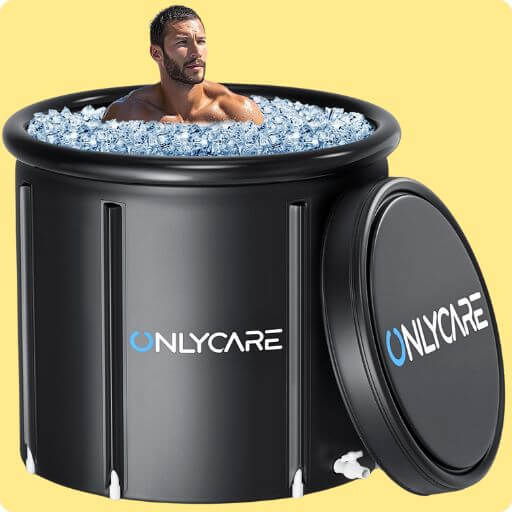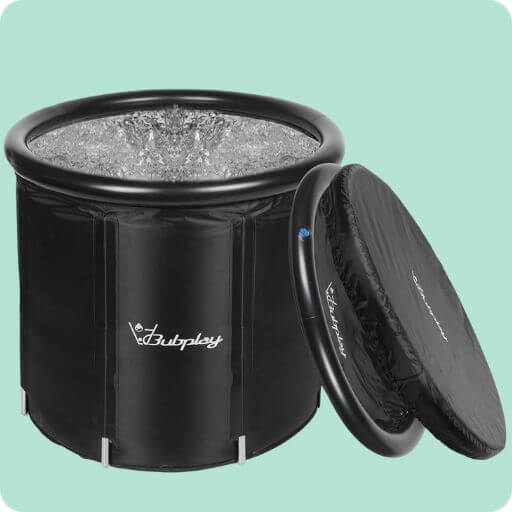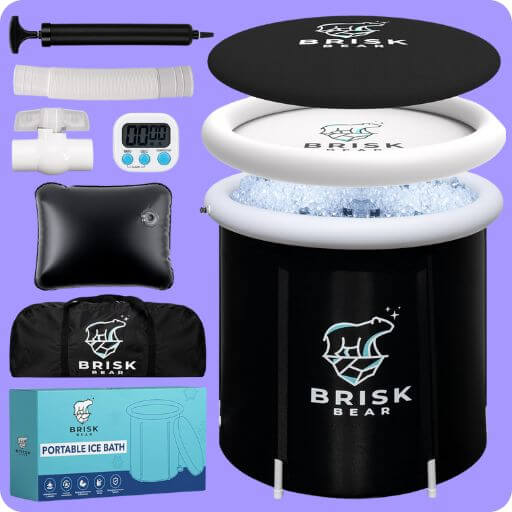Learn How Cold Plunge Therapy Works
Setup, Benefits & Buying Tips (2025)
Guides | By: Adma’s Grill | Publish On: June 5
Discover how cold plunge therapy boosts recovery, reduces inflammation, and enhances mental clarity. Whether you’re a beginner or an athlete, this guide breaks down everything you need to know before stepping into the cold.
What Is Cold Plunge Therapy?
Cold plunge therapy, also known as cold water immersion or cryotherapy, involves submerging the body in cold water (typically 39–59°F / 4–15°C) for short periods. It’s a scientifically backed method for boosting circulation, reducing muscle soreness, and promoting recovery.
Key Benefits:
How It Works: Step-by-Step
- Preparation: Fill your tub with water and ice or use a built-in chiller. Set temperature between 39°F–59°F.
- Entry: Enter slowly. Begin with 2-3 minutes and gradually increase over time.
- Response: Your body triggers vasoconstriction and endorphin release.
- Exit & Recovery: Dry off, warm up slowly, and hydrate.
Use a reliable product, such as the Plunge All-In Tub, for consistent cold therapy.
What Happens to Your Body?
Cold shock proteins, brown adipose tissue, anti-inflammatory response, and cryotherapy effects.
- Blood vessels constrict to conserve heat (vasoconstriction)
- Cold shock proteins and brown fat are activated, increasing metabolism
- Endorphins are released, improving mood
- Muscles recover faster as inflammation decreases
Who Should Try Cold Plunging (And Who Shouldn’t)?
Ideal For:
- Athletes, fitness enthusiasts, and recovery seekers
- People with chronic pain or inflammation
- Anyone wanting to enhance mental clarity
Avoid If:
- You have cardiovascular issues (consult a doctor)
- You are pregnant or highly sensitive to cold
Cold Plunge Tub Types
- Electric Chiller Cold Plunge Tubs – Premium, temperature control
- DIY Cold Plunge Setups – Affordable but less consistent
- Portable Ice Bath Tubs – Budget-friendly, great for beginners
Setting Up Your Cold Plunge Tub
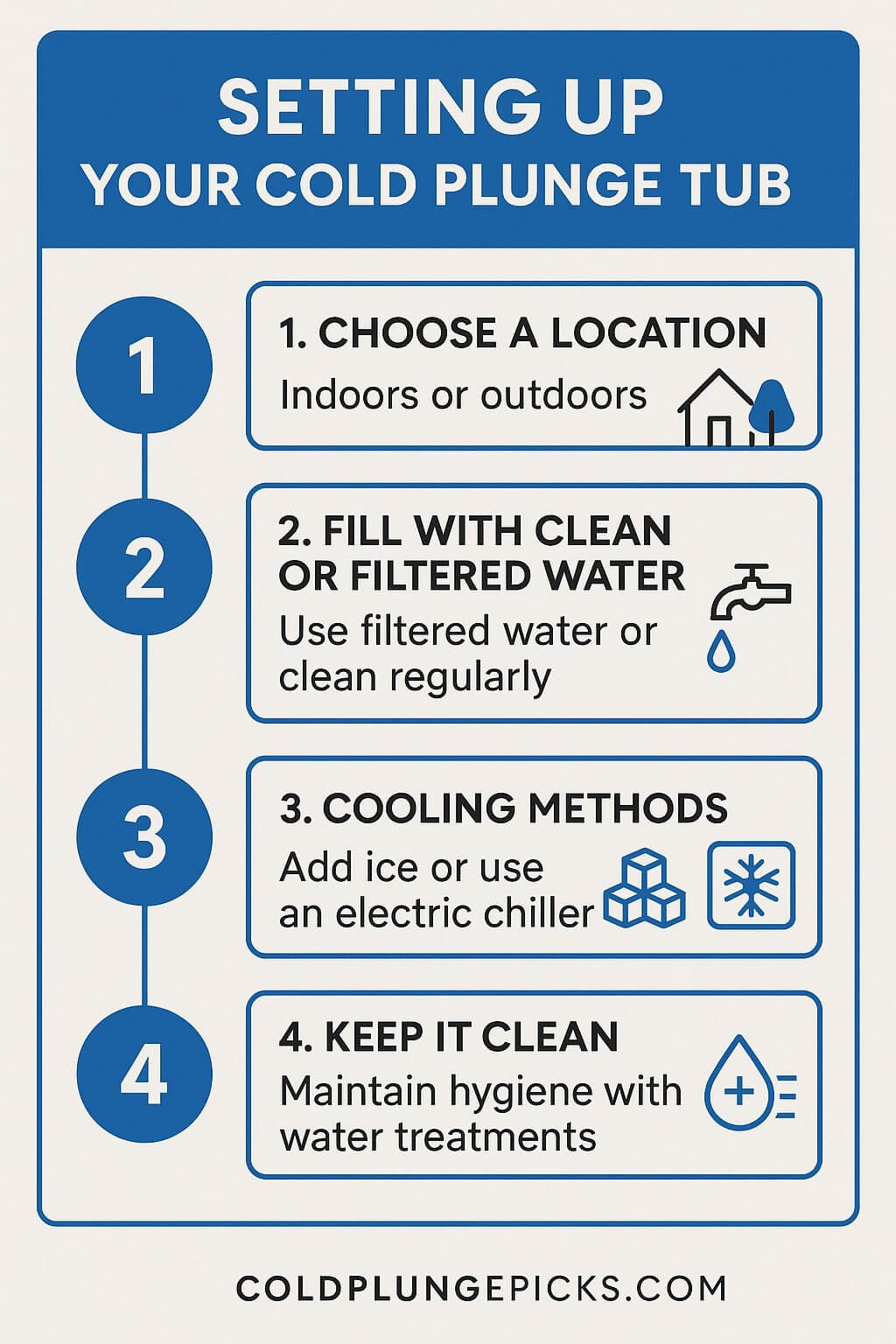
Installing a cold plunge tub at home can be simple or sophisticated, depending on the type of tub you choose. Here’s a practical breakdown to help you get started the right way:
1. Choose the Right Location
- Indoors: Great for consistent temperatures and privacy. Ensure proper drainage and ventilation.
- Outdoors: Offers natural ambiance but requires weather-resistant materials and stable flooring.
- Tip: Place your tub near a power source if it includes an electric chiller.
2. Fill With Clean or Filtered Water
- Use filtered water for a longer tub lifespan and skin safety.
- If using tap water, clean or replace water regularly to prevent buildup.
- Some high-end models feature built-in filtration systems, which are ideal for daily use.
3. Cooling Methods
- Manual Ice Baths: Add bags of ice for instant cold (budget-friendly, more effort).
- Built-in Chillers: Many premium tubs like The Plunge All-In come with electric chillers that cool and filter water automatically, great for consistent cold therapy without daily ice runs.
4. Keep It Clean
- Use bromine tablets, Hydrogen peroxide, or UV purification, depending on the type of tub.
- Clean surfaces weekly and replace water every 2–4 weeks unless it is filtered.
- Some units have self-cleaning or ozone sanitation built-in.
5. Set and Monitor Temperature
- Ideal cold plunge range: 37°F to 55°F (3°C to 13°C).
- Use an external thermometer for DIY setups or digital controls for electric chillers.
- Start with shorter sessions (1–3 minutes) and gradually increase the duration as your body adapts.
Shop for accessories like water filters, thermometers, and lids to complete your setup.
Cold Plunge Routine: Before, During & After
Before: Light warm-up, hydration, and breath control (e.g., Wim Hof method)
During: 2-10 minutes of immersion based on experience
After: Pat dry, gradual warm-up, stretch or light movement
People Also Asks (FAQs)
How long should I stay in a cold plunge?
Two to five minutes is ideal for beginners. Advanced users can go up to 10 minutes with caution.
Do I need ice or a chiller?
Ice is suitable for temporary use. Electric chillers offer consistent temperatures.
Is cold plunge therapy better than cryotherapy chambers?
Cold plunges offer full-body immersion and are more accessible and cost-effective.
Final Thoughts
Cold plunge therapy isn’t just a trend, it’s a science-backed recovery solution used by athletes, biohackers, and wellness enthusiasts worldwide. From boosting metabolism to reducing chronic pain, the benefits are real. Start smart, stay consistent, and choose a tub that fits your lifestyle.
Next Step: See Our Top Picks
Transparency Note
We may earn a commission when you purchase through our affiliate links. This helps us keep our reviews free and updated regularly, with no extra cost to you.

